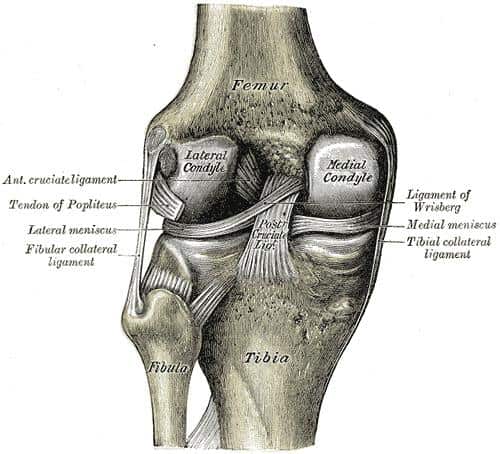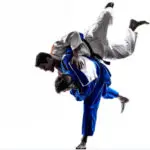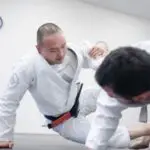Jiu-Jitsu is a dynamic activity where injuries will happen; ACL injuries are one of those injuries. This article will cover if ACL injuries are common in BJJ, risks, symptoms, and prevention for ACL injuries. And, if you can still train after one has occurred.
ACL injuries can occur during a takedown, submission attempt, or changing directions suddenly causing stress on the knee. Leg locks and heel hooks are the most common cause of an ACL injury in BJJ. Communicating with your partner before rolling and strengthening leg muscles can help prevent an ACL injury.
Are ACL Injuries Common In BJJ?
Professor Alex McDonald, along with his colleagues conducted scientific research to determine the prevalence of injuries in Brazilian Jiu-Jitsu athletes.
ACL injuries were found to be pretty common in Brazilian Jiu-Jitsu athletes. He also analyzed that this injury most often occurs during non-contact events. Leg locks and heel hooks are common high-risk submissions for an ACL rupture. Additionally, 4% of ACL injuries occur three times more during the middle or the end of a match.
This finding is consistent with many other scientific findings related to an ACL tear in Brazilian Jiu-Jitsu athletes.
What Is The ACL?
The anterior cruciate ligament (ACL) is a crucial ligament that helps maintain and stabilize the knee joint. Ligaments are strong bands of tissue that connect one bone to another.
The anterior cruciate ligament connects the shinbone (tibia) to the thighbone (femur). It’s most commonly injured and torn during outdoor sports that involve changes in direction and sudden stops — such as soccer, basketball, volleyball, and tennis.
Symptoms Of An ACL Injury
Signs and symptoms of an anterior cruciate ligament injury or tear include:
- Severe pain
- Inability to perform leg movements
- Swelling around the knee
- Loss of range of motion
- A popping sensation in the knee
- A feeling of instability with weight-bearing
- Inflammation and redness around the knee
Causes And Risk Factors Associated With ACL Injury
Causes of anterior cruciate ligament tear or injury are as follow:
- Receiving a direct collision or
- A direct blow to the knee
- Pivoting with the foot firmly planted
- Landing awkwardly
- Stopping suddenly and changing direction
Risk Factors
Numerous factors increase the risk of an anterior cruciate ligament injury:
- Poor conditioning
- Playing sports on artificial turf surfaces
- Wearing improper footwear
- Being female (possibly due to differences in hormonal influences, anatomy, and muscle strength)
- Osteoporosis
- Calcium deficiency
- Suffering from any skeletal degenerative disease

How To Prevent ACL Injuries
Proper exercise and training can help reduce the risk of anterior cruciate ligament injury. A physical therapist, sports medicine physician, trainer, or a specialist in sports physiology and medicine can provide instruction, assessment, and feedback that can help you reduce risks. Programs to reduce anterior cruciate ligament injury include:
- Exercise and training emphasizing proper technique and knee position when jumping and landing from jumps.
- A diet rich in vital nutrients, especially Calcium
- Pieces of training that strengthen leg muscles, particularly hamstring exercises, to ensure an overall balance in leg muscle strength.
- Exercises to strengthen the core, including the lower abdomen, hips, and pelvis.
- Training to improve technique when performing cutting and pivoting movements.
Training to strengthen muscles of the hips, legs, hips, and core and exercises to improve landing and jumping techniques may help reduce the higher anterior cruciate ligament injury risk associated with women athletes.
Can You Still Train BJJ With A Torn ACL?
It is possible to still train Jiu-Jitsu with a torn ACL and there are many accounts of people doing so. But, it is risky and can lead to other more serious knee injuries (torn ACL is already serious) since the ACL stabilizes the knee joint. BJJ is a very dynamic activity that will cause you to move and fall in unnatural ways which could cause more damage t your knee if your ACL is already torn.
There are many accounts of people training for many years with a torn and even competing with a torn ACL. But, the risk of long term pain, additional knee injuries, and even early onset of arthritis is high.
Knee support and avoiding rolling would be the safest option to continue training. Furthermore, incorporating private lessons will reduce the risk of inexperienced students practicing a position that could further injure your knee. Staying in a controlled environment may allow you to continue training until you’re able to get surgery.
Conclusion
ACL injuries do occur in BJJ with 4% of ACL injuries occurring three times more during the middle or the end of a match. It is important to communicate with your partner in rolling to go easy on locking in a leg submission, especially if you had previous knee problems.
Preventing an ACL injury involves strengthening leg muscles, particularly the hamstrings, while improving techniques when performing cutting and pivoting movements.
Sources
McDonald, A. R., Murdock, F. A., Jr, McDonald, J. A., & Wolf, C. J. (2017). Prevalence of Injuries during Brazilian Jiu-Jitsu Training. Sports (Basel, Switzerland), 5(2), 39. https://doi.org/10.3390/sports5020039
Evans J, Nielson Jl. Anterior Cruciate Ligament (ACL) Knee Injuries. [Updated 2020 Aug 10]. In: StatPearls [Internet]. Treasure Island (FL): StatPearls Publishing; 2020 Jan-. Available from: https://www.ncbi.nlm.nih.gov/books/NBK499848/
Davey A, Endres NK, Johnson RJ, Shealy JE. Alpine Skiing Injuries. Sports Health. 2019 Jan/Feb;11(1):18-26.


